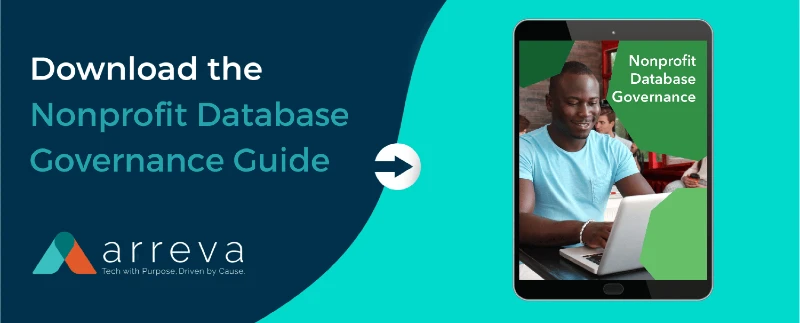When Good Data Goes Bad: Don’t Let Bad Data Cost You Donors.

This month we’ll be talking about your data: why it’s so important, how to put it to work for you, and proven methods for keeping it under control. In our first installment, why should you care about the quality of your data, and what are the risks when it’s not managed well? We’ll try to answer those questions for you today.
Personalized interactions are key to building donor loyalty. The information we collect about donors that allows us to tailor communications to individuals can collectively be referred to as “data,” but truly successful long-term donor relations can depend on treating that information with a more personal touch. After all, when we talk about donor data, we’re talking about people’s identities—their lives. Our handling of their data sends a message, and if we want to maintain our donors’ trust, it’s important to get that message right.
How Does Data Go “Bad”?
Sometimes your data is bad from the beginning, and sometimes it goes bad right under your nose. According to a 2017 survey by Harvard Business Review, “47% of newly-created data records have at least one critical (e.g., work-impacting) error.” The cause can be anything from faulty data entry to faulty processes. “Bad” data is outdated, duplicated, misspelled, factually inaccurate, missing important information, or otherwise incorrect or superfluous.
Typos happen, and without a good system in place, so do things like neglecting to update and clean out databases regularly, conflating similar names, combining individual, unpartnered adult members of households due to a shared surname, or including an inappropriate title in the data of a person with a traditionally gendered name. All of these result in bad data and most can be avoided. And data can go bad during a migration if the proper steps aren’t taken to prevent it. Any number of things can and do go wrong in the absence of healthy data management.
 Bad data can mean your communications never reach their intended recipient or that when they do arrive, they’re discarded on sight. It can mean that when you target donors with a particular message, you hit the wrong target—again, preventing your message from reaching the person you wanted to speak to. It can mean that your staff spends valuable time chasing down errors and correcting problems that result. But that’s not all.
Bad data can mean your communications never reach their intended recipient or that when they do arrive, they’re discarded on sight. It can mean that when you target donors with a particular message, you hit the wrong target—again, preventing your message from reaching the person you wanted to speak to. It can mean that your staff spends valuable time chasing down errors and correcting problems that result. But that’s not all.
How Does Bad Data Harm Relationships?
When it comes to donor relationships and communications, the result of less-than-stellar data management practices can be lost trust and loyalty, which can mean losing your donor’s attention. In social justice circles, it’s largely understood that “intent isn’t magic,” which certainly holds true in this context. What matters in a donor's communication is how the donor feels during and after the communication.
A mistake as simple as a misspelled or incorrect name, for example, can cause feelings ranging from irritation to offense to emotional distress, depending on the individual. It’s not hyperbole to say that using a previous name can cause some people to experience or relive traumas. Using a transgender donor’s “dead name” is a serious breach of trust, as is misgendering. The inclusion of a deceased partner’s name, or that of an ex after a bad breakup, can cause emotional upset. Any of these missteps can mean your donor deletes or tosses your communication without looking at it—and more importantly, that they lose trust in you, especially if their efforts to update their information have failed on your end.
Bad data can result from what we might write off as “simple human error,” but not having systems in place to prevent these inaccuracies elevates them from honest mistakes to “forced errors” when it comes to the impact they can have on a donor relationship. If personalized communications are crucial to forming lasting relationships with donors, then ensuring our contacts with donors don’t annoy or cause them discomfort or even pain is just as crucial.
A 2015 white paper from Experian noted that even with data solutions in place, organizations still reported that a significant percentage of their data was suspect and that inaccurate data was becoming more of a problem, not less.
“Interestingly, while all organizations suffer from data quality errors, those who have the least sophisticated approaches to data management do see more data errors They cite a much higher average figure for the proportion of their current data that might be inaccurate, an average of 41 percent, compared to those with more sophisticated approaches who cite between 20 and 27 percent.
This helps to illustrate that the type of strategy and tools an organization has in place to manage data quality can make a big impact on the accuracy of information for business insight and operations.”
A good data management system has checks in place for the basics like duplicates and misspellings. Better yet, it integrates new data from multiple sources seamlessly into your database, updating phone numbers, addresses, and job titles as well as tracking lifetime donations, preferred modes of contact, areas of interest, and other factors that allow you to personalize your communications and avoid the common pitfalls of data deterioration.


